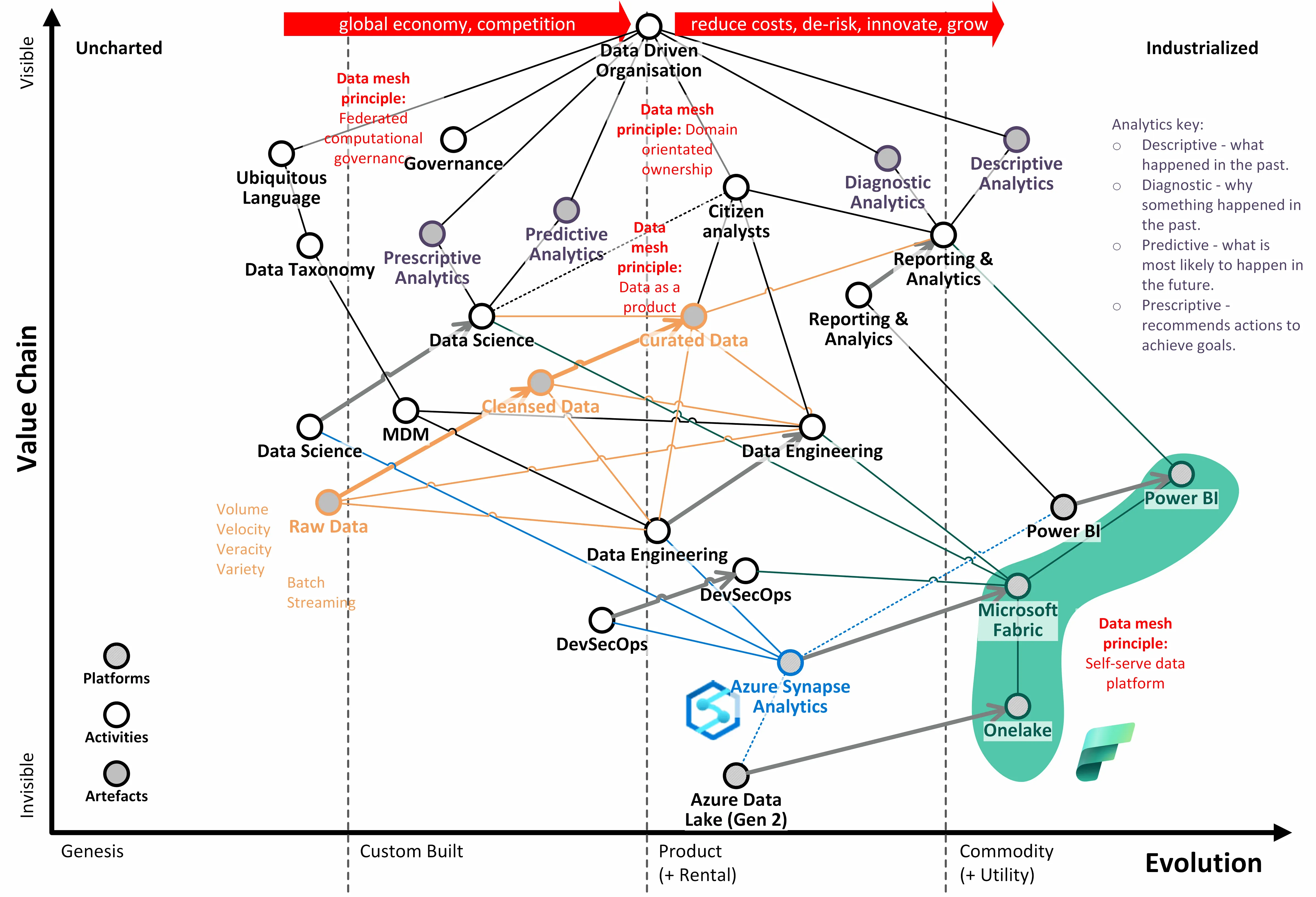
A Wardley map (created by Simon Wardley) (wikipedia entry) is a strategic model used to map how components/nodes within a system, map to user value and component evolution/commoditization. Value comes from the map when evolution is applied to nodes within the system to represent a transition from individual custom components to commoditized components. Playing with the motion of evolution of components, you can predict changes in strategy, market movements, future developments and even notice areas where different strategies may be needed for particular components.
Maps are different than graphs as the space/positioning between nodes matters and represents part of the relationship.
Value presents itself as components evolve, “shifting right” through the map. For example, something like compute started off as a product back prior to Clouds arriving. Once the cloud arrived, compute shifted right, and new value was opened up by proving new avenues for genesis and productization. We could virtualize machines. MTTR for new hardware acquisition dropped significantly. An evolving component also created pressure through-out the competitive landscape and force people to make plays.
If you control an evolving component, what kinds of pressure can you apply towards your competition?
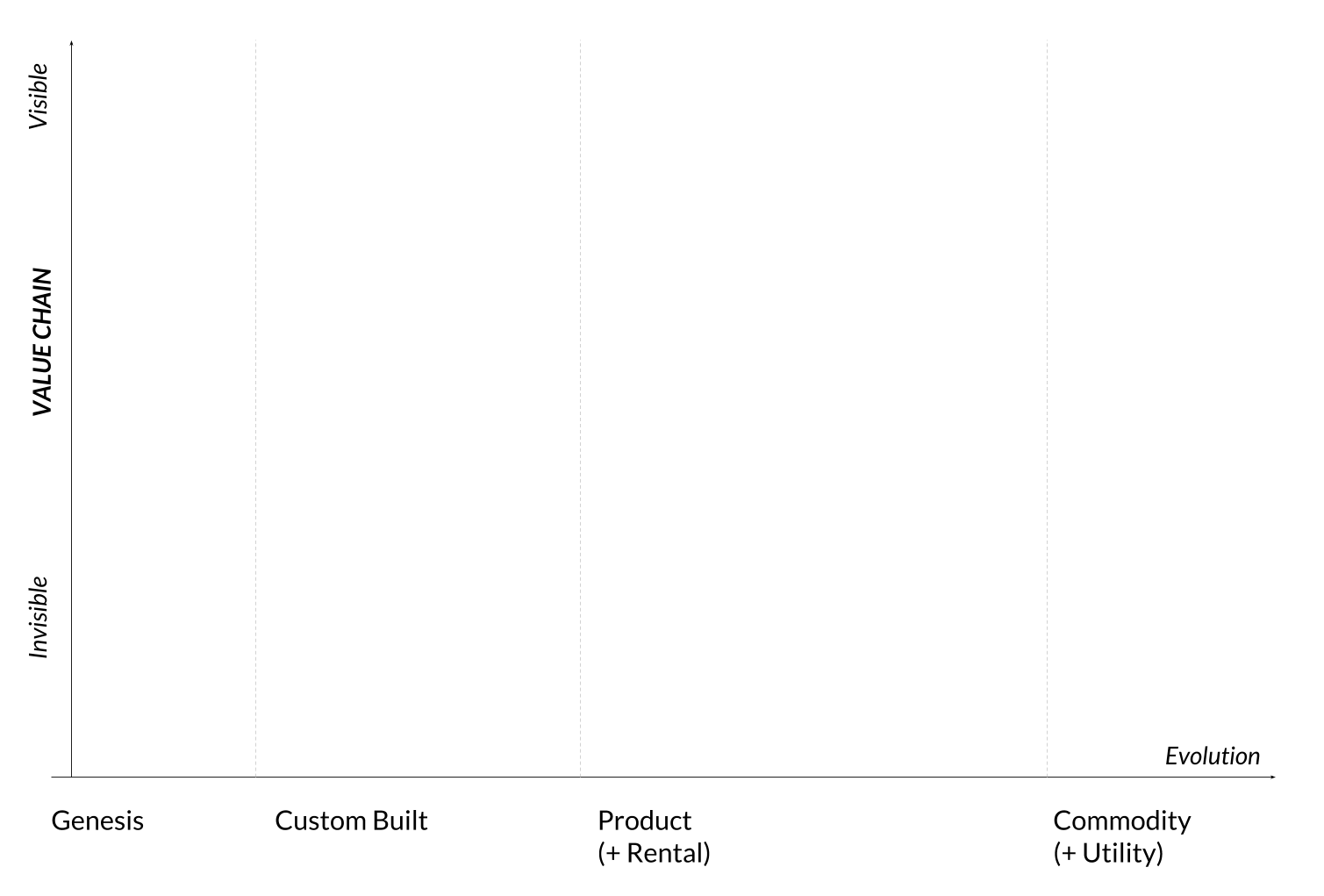
- x-axis: component evolution.
- Is the component something that is brand new and required a bunch of research, or is it a well established commoditized/industrialized practice?
- Genesis, Custom, Product, Commodity/Industrialized
- supply/demand forces evolution
- y-axis: customer visibility
- is this something that’s visible to the end user/customer, Or is it a dependency thats invisible to the customer.
- ex: Bakery: cookies vs power bill for the bakery.
- visible, invisible (to the customer/end user)
- Anchors
- The first nodes to go into the map. Ex: User’s and your business. You can extend this with other players/stakeholders.
Generically, the map ends up looking something like:
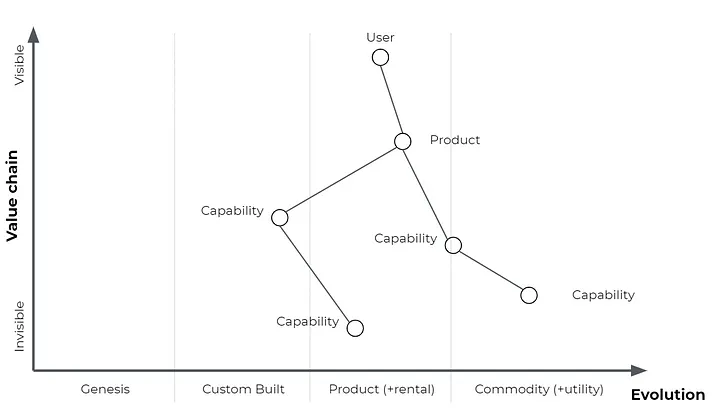
What about the edges, are there interesting insights to be gained from the edges connecting the nodes within the map? Why does this connection exist? This especially iportant to understand when connecting the user node to your product/service offering node.. Is the need between the customer and your product, something that will never go away, or is it a temporary fad that may be replaced with something else? ex: Gas Stations, when car electrification eliminate the need for gas stations? It’s a great place to identify tensions/gaps/weaknesses/needs.
User Value/Need and Commoditization
Is your user need just a commoditized product? If so this may indicate a lack of moat for your product, since anyone can commoditize it.
Process and Evolution
Think about how something like Agile/LEAN/6 Sigma should be combined with different evolution phases of a product. Components in genesis should use something more like Agile for maximal feedback cycle and change iterations, whereas 6 Sigma may be more used on a commoditized component to ensure quality and reduced chance of
Explore Strategic Gameplay
Basic market moves can be strung together to form unique, context-specific strategies.
Shifting Left
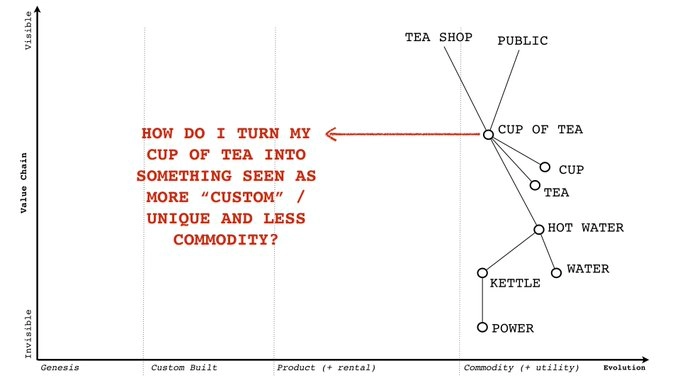
Can you move highly visible nodes left to create unique offerings/brands?
If you need to focus on product differentiation, that should probably se something that is custom, so shift that left as opposed to outsourcing or using something from someone else.
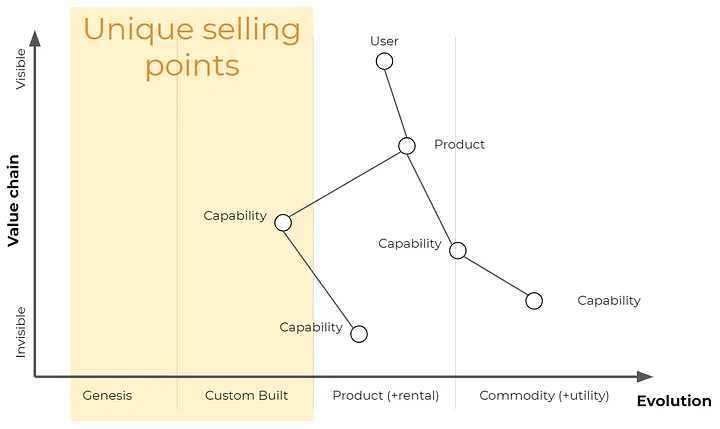
Identify and sell “The Experience”
You’re not selling just a cup of tea:
The sleight of hand, is I’m no longer actually buying a cup of tea (that’s a commodity) … what I’m buying is a whole “experience” … status, that feeling of doing something good … it’s not just a cuppa, it’s a life changing moment … cue the advertising. - Simon Wardley
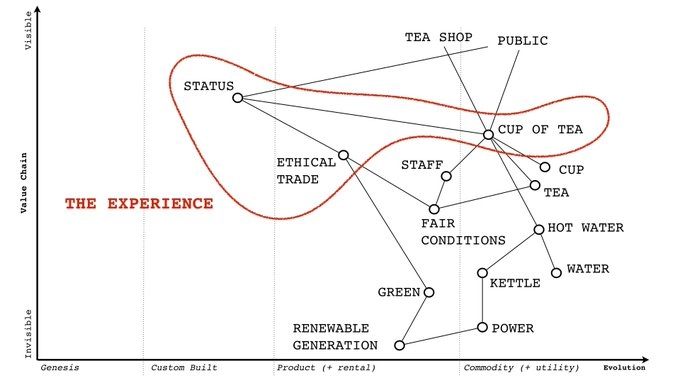
See: https://twitter.com/swardley/status/1146943572576538624
Shifting Right
How does the component evolve as they move towards commoditization? How can you leverage that to create new opportunity/value from componentization. Can you now create higher level abstraction that you can sell? - Ex: Once compute became a commodity, AWS was able to build higher level abstractions to sell to the world.
Overlay Maps to gain insights
If you take maps from a bunch of different sources, is everyone outsourcing the same component? Are you building your own CRM when everyone else is using something off the shelf? Is everyone building something custom, which presents an opportunity for productization?
Resources
Essential
- X thread by Simon explaining the concepts simply - Quick scroll through explains the how and why.
- Simon Wardley at AWS Institute: Youtube - A terrific YouTube series which opened my eyes to Wardley Maps, taught by the man himself.
- The Art of Strategy: Wardley Mapping Examples Annex: A curated collection of Wardley Maps - A nice collection of maps.
Supplemental
- The Book
- medium.com/wardleymaps The OG blog posts from Simon Wardley.
- Wardley Maps 2 — Unique selling points: Joe Blair - A great example about Tea and how to create a unique product offering using Wardley Map’s as a guide.
Related Notes
- Evolution of Naval Warfare
- EVTP: Explorers, Villagers, Town Planners
- Logical Fallacies
- Rating Systems
- Strategic Models
- Wardley Maps








